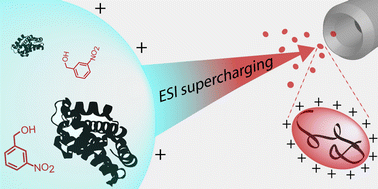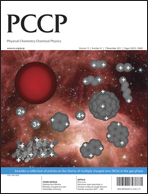Effects of covalent intramolecular bonds, either native disulfide bridges or chemical crosslinks, on ESI supercharging of proteins from aqueous solutions were investigated. Chemically modifying cytochrome c with up to seven crosslinks or ubiquitin with up to two crosslinks did not affect the average or maximum charge states of these proteins in the absence of m-nitrobenzyl alcohol (m-NBA), but the extent of supercharging induced by m-NBA increased with decreasing numbers of crosslinks. For the model random coil polypeptide reduced/alkylated RNase A, a decrease in charging with increasing m-NBA concentration attributable to reduced surface tension of the ESI droplet was observed, whereas native RNase A electrosprayed from these same solutions exhibited enhanced charging. The inverse relationship between the extent of supercharging and the number of intramolecular crosslinks for folded proteins, as well as the absence of supercharging for proteins that are random coils in aqueous solution, indicate that conformational restrictions induced by the crosslinks reduce the extent of supercharging. These results provide additional evidence that protein and protein complex supercharging from aqueous solution is primarily due to partial or significant unfolding that occurs as a result of chemical and/or thermal denaturation induced by the supercharging reagent late in the ESI droplet lifetime.

You have access to this article
 Please wait while we load your content...
Something went wrong. Try again?
Please wait while we load your content...
Something went wrong. Try again?


 Please wait while we load your content...
Please wait while we load your content...